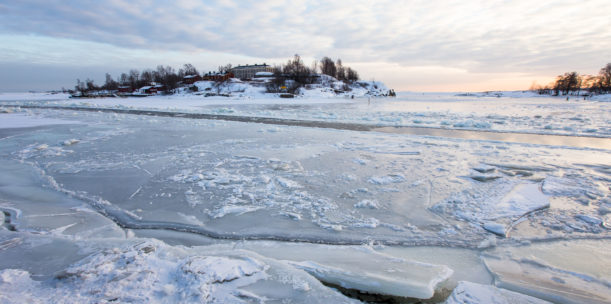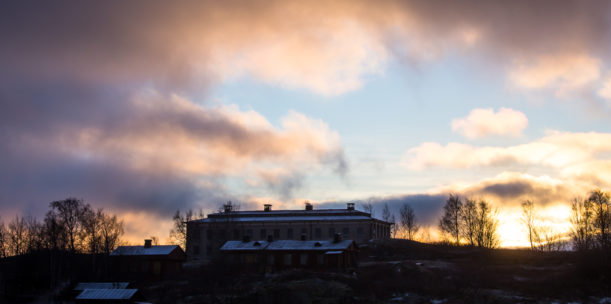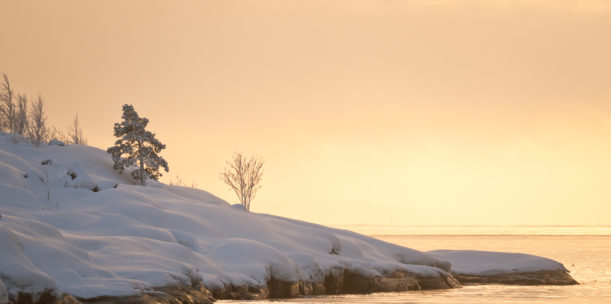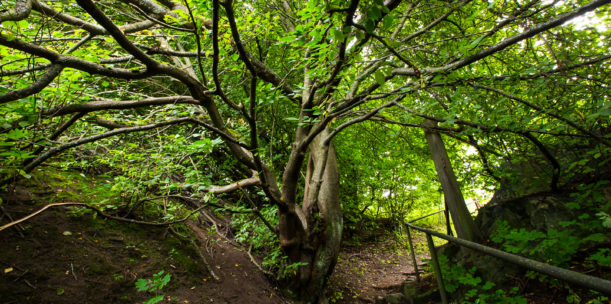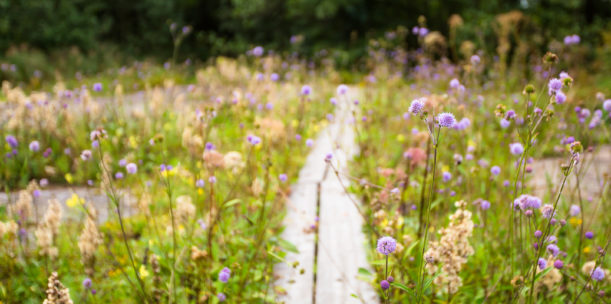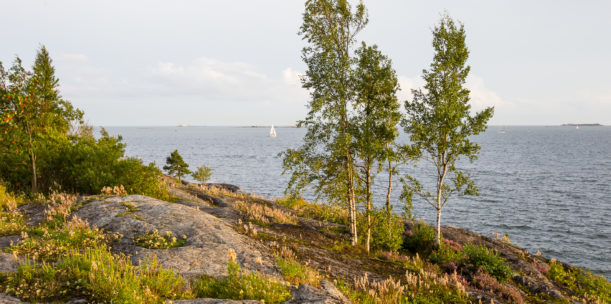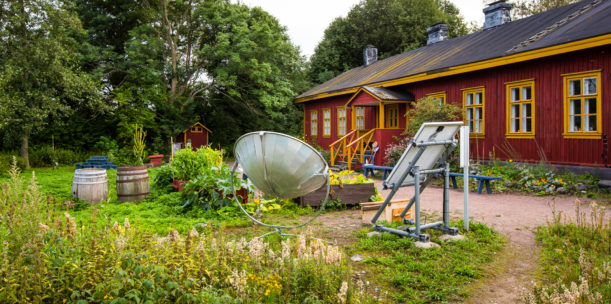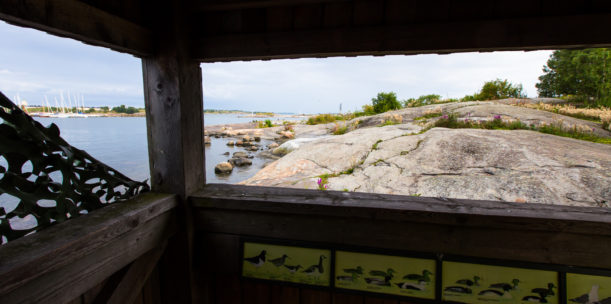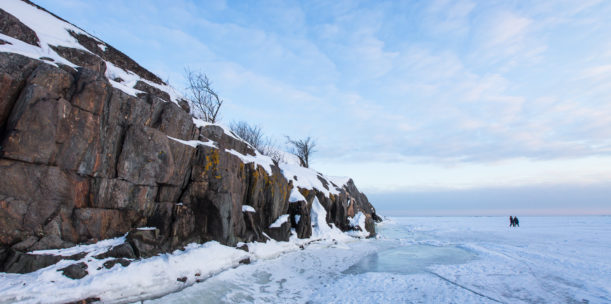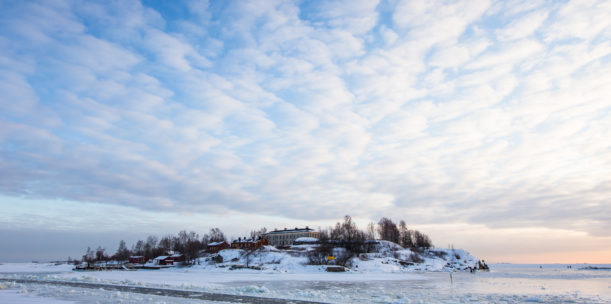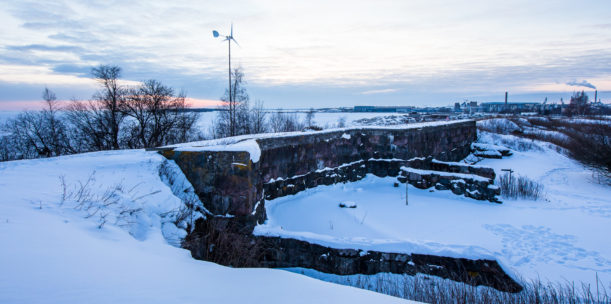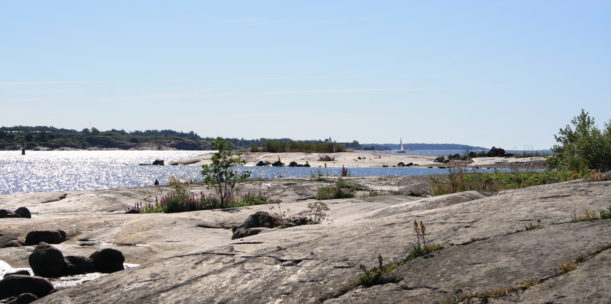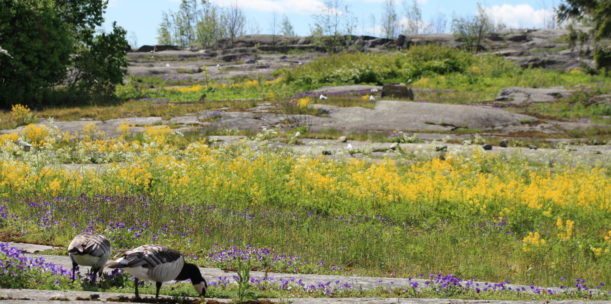The island boasts very diverse flora and fauna, with a particularly broad range of plant species relative to its size and a good range of typical archipelago birds. The roped off conservation area located on the southern tip of the island is used as a nesting ground by the endangered lesser black-backed gull, along with other gulls, terns and waders. The entire island also serves as a nesting ground for eiders, gulls and barnacle geese, in particular, which are quite numerous.
Those visiting the island during the nesting season are advised to avoid close contact with the island’s barnacle geese and common gulls, as they tend to be very aggressive in defending their eggs and young. On the other hand, the island offers an opportunity to see chicks hatching from their eggs, which is something you can’t experience just anywhere. The island is also an excellent place for observing frogs and common toads in particular.
The island includes many different habitats, such as common alder forests, coastal meadows, dry, rocky meadows and swampy rock ponds. The species inhabiting them have been carried to the island by the winds, the sea, birds and people, from as far away as the steppes of Russia. Species native to Russia found on the island include the warty cabbage and the hoary alyssum.
“You have to experience the sea in person before you can understand, love and protect it. Finding a prawn caught in a net and marvelling at its translucency is completely different from simply seeing a picture of one.”
Kaisa Pajanen, team manager, City of Helsinki Environment Services, Harakka Nature Centre
There are four conservation areas on the island of Harakka, one of which is protected due to its bird species, while the other three are protected due to their plant life. The protected coastal meadow is home to the rare restharrow.
The Harakka Nature Centre is open to the public from the start of May to the end of September. In the summer, the island hosts plenty of events and tours. There is also a nature school on Harakka that provides teaching to other schools in Helsinki, in addition to which the island is used to organise island adventures for day care groups. Visitors can also explore Harakka independently by following the nature trail, which provides an overview of the island’s nature and history.
If you wish to get a glimpse way, way back into history, look no further than the coastal rocks. The rocks behind the aquarium shed contain pillow lava structures that were formed 1,900 million years ago when there were volcanoes erupting in the area. You can learn more about them on the geology-themed trail.
Get to know Harakka island with the 360° -video below or by clicking here.
